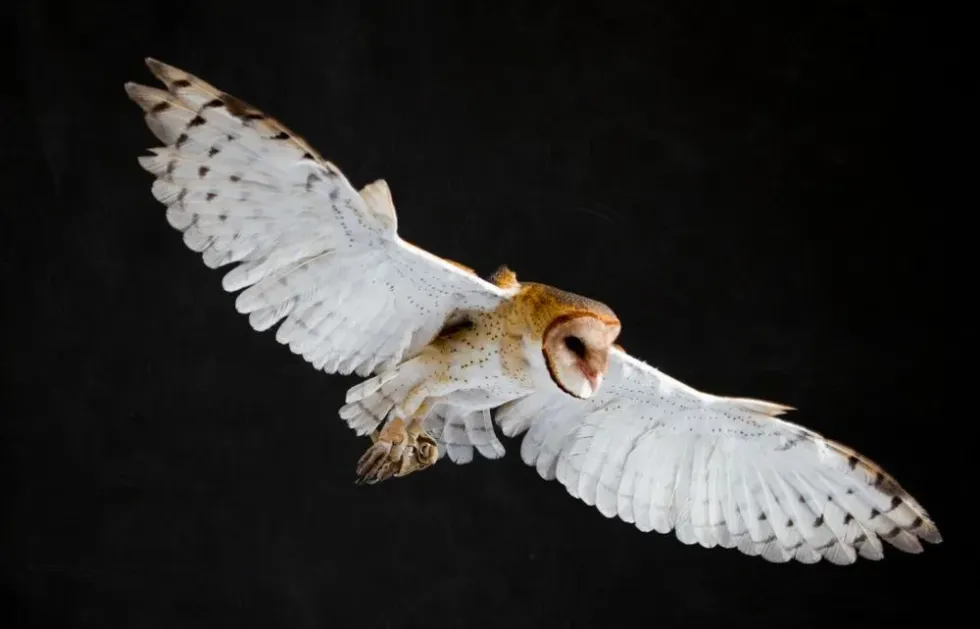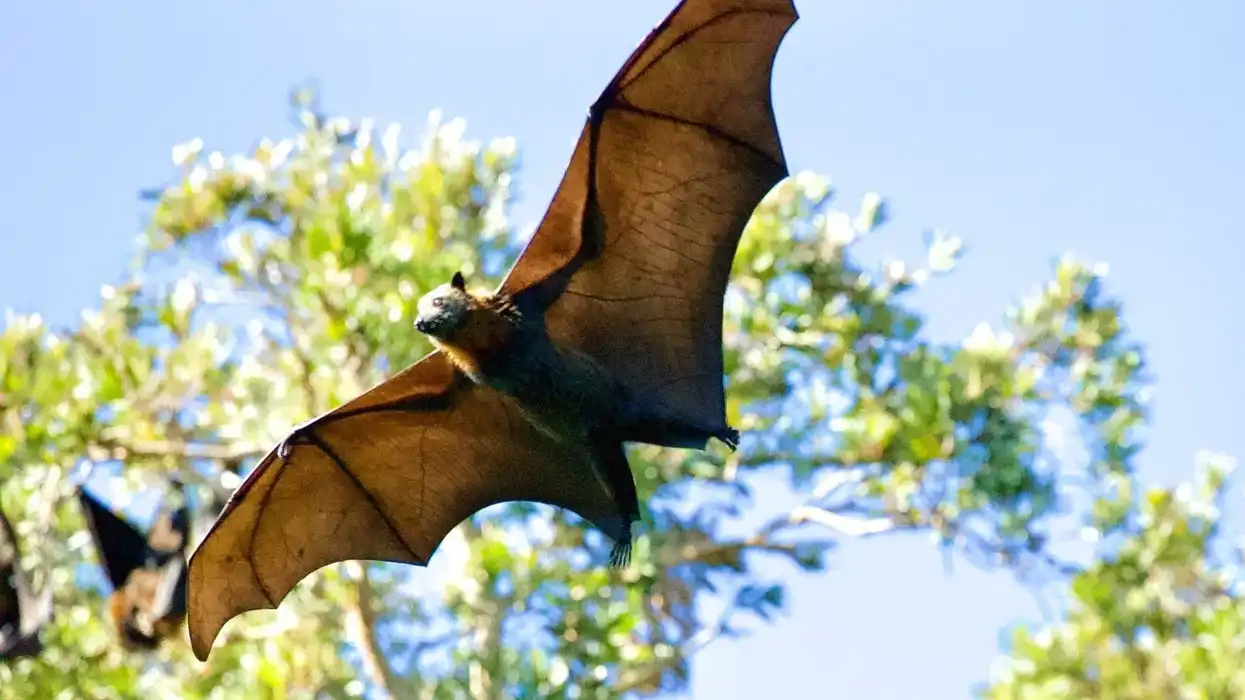The North American barn owl is a subspecies of the barn owl. This bird is found in the continent of North America as its name suggests, specifically from Mexico to the southern Canadian regions.
This owl is also found in Hispaniola, Bermuda, the Bahamas, as well as Hawaii where it is an introduced species. This bird lives and nests in many different kinds of habitats such as open habitats, scrubs, agricultural fields, and human adjacent areas.
It is a mostly solitary bird that has a very high infant mortality rate. The average lifespan of the North American barn owl is four years.
This wild barn owl is mostly colored orange, gray, buff, and white. The feet and legs of North American barn owls are stronger than European barn owls and they are overall heavier as well.
These birds also have excellent low-light vision and superb hearing making them formidable predators. The North American barn owl has a status of Not Evaluated on the IUCN Red List.
For more relatable content, check out these tawny owl interesting facts and short-eared owl facts for kids.
North American Barn Owl Interesting Facts
What type of animal is a North American barn owl?
The North American barn owl is a bird.
What class of animal does a North American barn owl belong to?
The North American barn owl belongs to the Aves class of animals.
How many North American barn owls are there in the world?
The North American barn owl is a subspecies of the American barn owl subspecies group, which itself is not widely considered separate from the barn owl species. The North American barn owl has not been evaluated so the total number of these barn owls present in the world is currently unknown.
Where does a North American barn owl live?
The North American barn owl is found from central Mexico to the southern parts of Canada. It is also seen in Hispaniola, Bermuda, and the Bahamas. It had been introduced to Australia's Lord Howe Island but is extinct there now. This barn owl was introduced to Hawaii in 1958 and the species is still alive there.
What is a North American barn owl's habitat?
North American barn owls are found in different kinds of habitats depending on changing seasons and the presence of food resources and competing predators.
It is seen in open country, scrubs, hedgerows, open marshes, cliffs, rocky coasts, ricefields, mudflats, canyons, deserts, lowlands, and cultivated land with scattered hollow trees. The owl is also seen near urban areas, towns, and villages. The isolated buildings make for good roosting and nesting spots.
Who do North American barn owls live with?
North American barn owls are solitary birds, but may also be seen in pairs during the breeding season.
How long does a North American barn owl live?
North American barn owls have a short life span in the wild. The average North American barn owl lifespan is four years. The oldest North American barn owl to have lived was 15 years and five months old.
How do they reproduce?
North American barn owls tend to nest in cavities in trees or in rock crevices, man-made structures, and in nest-boxes. Nests get reused for up to decades.
The female lines the nest with pellet bits. Usually, four to seven eggs are laid in a clutch but this number can be as high as 18 or as low as two. The incubation of the eggs lasts for 29-34 days which is done by female owls.
Males are responsible for providing food to the female owls for the whole breeding season. There may be continued copulation and breeding after a brood of chicks has hatched which proves injurious to the chicks. The young chicks born are not very well developed.
They are fed by the female owls but the males are still responsible for bringing the food. The nest site is kept clean by both parents.
The young chicks fledge when they are 50-70 days old. They keep coming back to roost at the nest for an additional seven to eight weeks.
The young are completely independent three to five weeks after they start flying. Sexual maturity is attained at the age of one. One or two broods may be produced in a season, sometimes three.
What is their conservation status?
North American barn owls have a status of Not Evaluated by the International Union for Conservation of Nature.
North American Barn Owl Fun Facts
What do North American barn owls look like?
The upperparts of the North American barn owl are gray and buff-orange. The underparts have a lot of speckling and are colored light buff to whitish.
The European owls of the T. a. guttata subspecies look very similar but the North American barn owl has more speckles. The feet and the long legs of North American barn owls are much stronger too. These birds are also noticeably bigger and heavier.
Overall, the North American barn owl is a medium-sized species of owl and has long and rounded wings. The tail is short and colored light brown or white.
Like most owls, the plumage is downy and small. The legs are feathered and the flat and pale-white face is heart-shaped. The eyes are black and the hooked beak has a ridge of feathers above it.
Also, there is a scaly middle claw that the owl uses to preen the feathers on its head and neck as well as the bristles at the base of the beak. The face has a brown border around it and there are no ear tufts.
Female North American barn owls are about 10% bigger than the males. The young chicks have white-colored down feathers for about six days which are replaced by buff-colored feathers. After losing the down feathers altogether, the juveniles resemble adult owls.

How cute are they?
North American barn owls are cute and beautiful. These birds have gorgeous pale heart-shaped faces that look like flat masks. They have big black eyes and feathered ridges above their beaks which look like noses. These features make them look endlessly mysterious and macabre. These owls are even more beautiful in flight with their rounded, long, and massive wings.
How do they communicate?
North American barn owls communicate via calls and displays. The alarm call is a hissing and hoarse scream that sounds like 'shrrreeeeeee'. This scream is heard during flight too. The alarm call of a female is lower-pitched and weaker than males.
North American barn owls also give out distress calls in the form of drawn-out and serial screams. Their call for defense is a hissing sound. When encountered by predator mammals, an explosive yell is uttered.
Other sounds produced are bill-snapping, wing-clapping, and tongue-clicking. North American barn owls are more vocal during the breeding season. Owlets or young chicks use twitters during quarrels with nestmates to get the attention of their parents. Adults also utter twitters during courtship activities.
North American barn owls also have a fantastic ability to find prey with the help of sound. Their ears are placed asymmetrically and this feature helps them localize the noises made by their hidden prey. The vision of North American barn owls in low light is excellent too.
How big is a North American barn owl?
The North American barn owl is 12.6-15.7 in (32-40 cm) and has a wingspan of 29.5-43.3 in (75-110 cm). This makes them twice as small as harpy eagles.
How fast can a North American barn owl fly?
North American barn owls fly at speeds of 10-20 mph (16.1-32.2 kph).
How much does a North American barn owl weigh?
A North American barn owl weighs 14.1-24.7 oz (400-700 g).
What are the male and female names of the species?
The males and females of the North American owl species are not generally referred to by any specific names. Female owls may rarely be referred to as hen owls.
What would you call a baby North American barn owl?
A baby North American barn owl is called a chick, a fledgling, or an owlet.
What do they eat?
North American barn owls eat meadow voles, other voles, shrews, mice, wood rats, cotton rats, other rats, ground squirrels, pocket gophers, amphibians, lizards, large insects, and small birds.
These birds themselves are eaten as food by American opossums, common raccoons, eagles, bigger hawks, great-horned owls, and other owls.
Are they poisonous?
No, North American barn owls are not poisonous.
Would they make a good pet?
No, North American barn owls would not make good pets. Their small feathers are not for stroking and their sharp talons and sturdy feet may inflict deep wounds.
Keeping them indoors means dealing with white droppings and damaged furniture. Besides foraging, they are largely inactive. These birds may see humans as potential partners or as competitors, both of which can be very irritating.
These owls call for food incessantly and a captive owl can be very noisy, even at night. A huge aviary would be required to keep these owls and their prolific breeding would have to be kept in check.
Also, despite all of these problems, if you do keep a North American barn owl in captivity, it is not legal to release them into their natural wild habitat. A legal license may be required to keep them in the first place.
Did you know...
The various subspecies of the barn owl (Tyto alba) are found in North America, South America, Africa, Europe, India, Arabia, southeastern Asia, and Australia. These birds are not just endemic to North America.
The barn owl (Tyto alba) is 11-17.3 in (28-44 cm) long and has a wingspan of 27-41 in (68-105 cm). It weighs 7.9-25 oz (224-710 g).
Barn owls do not make good pets, but you do need a license if you want to keep them. It is illegal to release captive owls into the wild again.
The scientific name of the barn owl is Tyto alba.
The predator species of barn owls include great horned owls, skunks, opossums, snakes, and foxes.
Barn owls can fly at speeds of 10-20 mph (16.1-32.2 kph).
What does the North American barn owl's call sound like?
The typical North American barn owl call is a hoarse and hissing 'shrrreeeee' scream. There are twitters, separate distress screams, and defensive hissings as well. They also bill-snap, wing-clap, and tongue-click.
What is special about barn owls?
There are many special things about barn owls of the family Tytonidae. Their wings have a sound-dampening design that lets these owls fly soundlessly. Barn owls have an excellent low-light vision that helps them to find prey. Their hunting of small mammals is ecologically important.
Barn owls are able to eat more than their own weight in rats and mice in a single evening. At the prospect of a threat from a predatory animal, they sway their lowered heads from one side to another, while spreading their wings and growling.
This defensive behavior is called toe-dusting. They are named for the habit of living in silos, church towers, water tanks, and especially barns. The faces are 'framed' and their ears are at different levels which makes them extremely keen listeners.
Barn owls have many other names such as death owl, hissing owl, monkey-faced owl, ghost owl, hobby owl, and delicate owl.
Here at Kidadl, we have carefully created lots of interesting family-friendly animal facts for everyone to discover! Learn more about some other birds from our griffon vulture interesting facts and burrowing owl fun facts for kids pages.
You can even occupy yourself at home by coloring in one of our free printable north American barn owl coloring pages.









